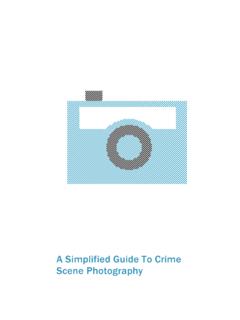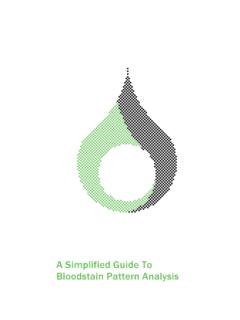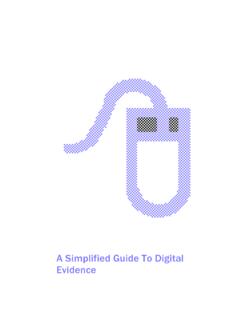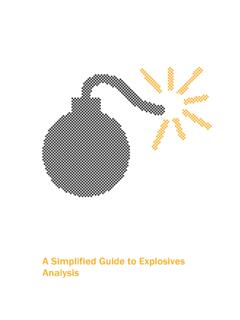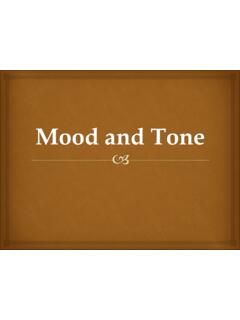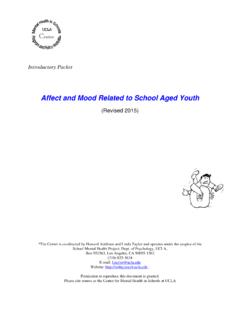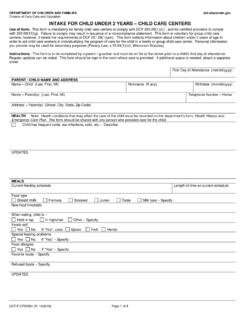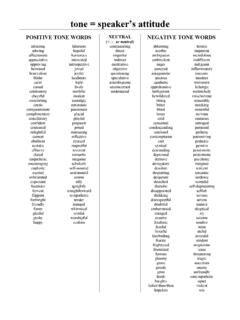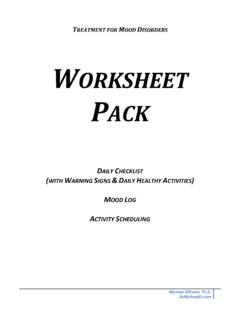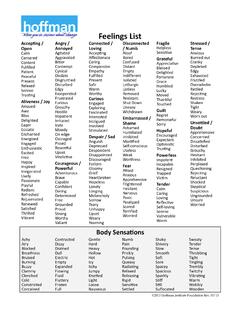Transcription of A Simplified Guide to Forensic Drug Chemistry
1 A Simplified Guide to Forensic drug Chemistry Introduction From the cocaine dealer on the corner to the clandestine meth lab in the abandoned trailer to hundreds of pounds of marijuana seized by the Coast Guard, illegal drugs permeate modern society. Even prescription medication can be an illegal drug if sold or given to someone for whom it was not prescribed. Over the past decade, new and more dangerous synthetic drugs have come to market. Their producers attempt to circumvent the law by continuously altering the chemical composition of the substances to avoid prosecution. The illegal drug trade creates a global black market economy that puts the public at risk, not just from the substances being distributed, but also from the subsequent crimes committed by users, traffickers and manufacturers.
2 These crimes typically include burglary, assault and fraud, but can also involve more serious crimes such as homicide, abduction and human trafficking. Marijuana leaf. Courtesy of NFSTC. Forensic drug Chemistry uses a series of processes performed in the field or laboratory to detect the presence or absence of controlled substances. Chemical analysis performed in the laboratory on submitted evidence detects and identifies illegal drugs, and helps law enforcement prosecute offenders. This practice uses a variety of chemical analysis methods to conduct both presumptive and confirmatory tests on seized material suspected to be or contain illegal substances.
3 Results from this analysis often serve as the basis for criminal proceedings and help to determine sentencing for convicted offenders. Principles of Forensic drug Chemistry Forensic drug Chemistry is simply Chemistry as it is applied to the identification of illegal substances within the criminal justice system. Like all other Chemistry disciplines, it examines the way the atoms and molecules in matter interact and bond with each other. All matter has a chemical signature, or set of characteristics that are unique to only that substance. Chemists use these characteristics to identify substances using scientific methods that can be replicated by other chemists and thus are presentable as fact in court.
4 Forensic Chemistry covers illegal drugs, explosives and poisons. What makes a substance illegal? An illegal drug is defined as a substance that causes addiction, habituation, or a marked change in consciousness, has limited or no medical use and is listed on one of the five schedules within the Controlled Substances Act. These schedules include drugs such as cocaine, heroin, methamphetamines, certain prescription drugs, and marijuana, among many others. In Forensic drug Chemistry , analysts use scientific findings to help investigators pursue legal action against individual(s) suspected of a drug - related crime.
5 The goal of Forensic drug Chemistry is to determine whether the material submitted contains an illegal substance. Based on the results of the analysis, law enforcement can pursue criminal charges and the court can determine appropriate sentencing. Forensic drug chemists analyze samples of unknown materials including powders, liquids and stains to determine the chemical identity or characteristics of the compounds that make up the sample. Samples submitted as evidence in a drug - related case can contain one compound or a mixture of many compounds. For example, cocaine powder is often cut with other substances such as caffeine or lidocaine.
6 The Forensic chemist who receives the sample suspected to be cocaine will need to separate out all the individual compounds and test to see if one of those is cocaine. They do this by looking at the chemical characteristics of each compound and comparing those characteristics to reference material analyzed using the same instrument. Presumptive and Confirmatory Testing for Drugs There are two main types of tests used to determine whether an illegal drug is present in a substance: presumptive tests and confirmatory tests. Presumptive tests are less precise and indicate that an illegal substance may be present.
7 Confirmatory tests provide a positive identification of the substance in question. Presumptive testing may be conducted in the field by law enforcement officers or in the laboratory once the seized material is accepted. Confirmatory tests involve a battery of instrumental tests using techniques such as Gas Chromatograph- Mass Spectrometry (GC- MS) or infrared spectroscopy that separate individual compounds in the substance and positively identify the chemical signature of the illegal substance(s) within the material. The specific tests performed can vary from lab to lab depending on the procedures set in place by the agency.
8 Presumptive tests may also be conducted at the point of seizure by law enforcement; however, confirmatory tests are typically performed in the laboratory. Presumptive testing are usually colorimetric, meaning the test will indicate that the suspected substance is present or not present by changing color. If the substance is present, the test kit will turn one color, if not, it turns a different color. Presumptive testing by law enforcement is typically followed up with laboratory tests that confirm with certainty the presence of the suspected substance. Presumptive testing is also performed in the laboratory as part of the analysis process.
9 Colorimetric test to detect the presence of methamphetamine or MDMA (Ecstasy). Courtesy of NFSTC. Confirmatory testing uses instrumental analysis to positively identify the contents of submitted material. This typically requires a multi- step process to separate the individual compounds, determine the chemical characteristics of the compounds, and compare them against reference materials to make a positive identification. This is called qualitative analysis, and determines what substances are present and if one of more of those substances is illegal. The analyst may have an idea, based on information from presumptive tests or the submitting agency, of what type of drug is contained in the sample.
10 This information, as well as the laboratory policies in place, will determine what tests the analyst will use. A typical battery of tests will include separation techniques to separate the various compounds and spectroscopy instruments to identify the chemical characteristics. Confirmatory tests, depending on the lab requirements, may also include quantitative analysis of the sample to determine the amount, or purity, of the illegal substance. The purity of the illegal substance is used for sentencing purposes at the federal level. For example, a sample that contains 80 percent pure dextro- methamphetamine HCl will carry a harsher sentence than a sample containing a lesser purity of the drug .

